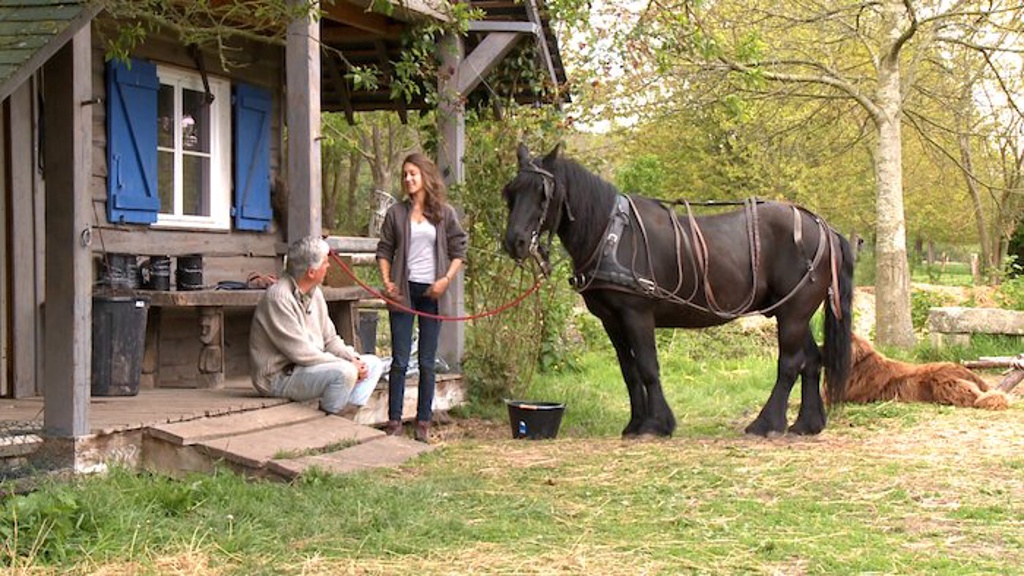
Miraculous Abundance by Perrine & Charles Hervé-Gruyer
I loved this book, but it's not a how-to book, it's a story of a family learning to farm.
What I most enjoyed was that it appealed to my sense of beauty and possibility in a way that other market gardening books haven't. Like those books, this is a description of a working farm, of people working the land to earn their living. Unlike those books, this book won't teach you how to farm. What it might do (and what it did for me) was to rekindle the belief that earning a living from a farm doesn't have to be about ruthless efficiency.
I love the idea of producing and selling food and of helping to regenerate an ecosystem, I've taken several market gardening classes and read a bunch of books. However, each time I've dug in to the details I couldn't get enthused, the practical reality of growing food for money just seemed tedious and overwhelming. What JM and Curtis added to the picture was that you can make good money doing it. What Charles and Perrine add to it is that it can be food for the soul too.
If you're interested in regenerative agriculture, Miraculous Abundance provides a wonderful overview of everything you might want to research in greater depth. It summarises most of what I've learned in the last five years and drops quite a few hints about fascinating new topics to research (making bokashi from your own indigenous microbiology!?). If you're wanting to learn techniques, skip this book. If you're wanting an overview of what's possible and how one family navigated to a profitable, beautiful, amazingly diverse small-scale, permaculture farm, then I can't think of a better book to read.
A few snippets that stood out for me:
On the traditional Parisian market gardeners that inspired Elliot Coleman and John Jeavons:
The market gardeners of Paris form the category of workers which is the hardest working, most consistent, most peaceful of all those who live in the capital. However solid or weak their situation, we never see the gardener change occupations. The sons of a gardener become accustomed to work, under the eyes and with the example of their fathers, and almost all become established market gardeners. The daughters rarely marry a man from a different profession than their father. Although the job is very hard, the market gardener becomes attached to it.
— Manuel pratique de culture maraichere, Moreau & Daverne 1845
Parisian market gardeners are called jardiniers-maraichers in French, which contains the word marais, meaning "swamp" or "marsh". It is a reminder of the time long ago when vegetable crops were grown in wetlands, in the small spaces left free by urbanization, when regulations were much looser than today. In 1845, food crops within the walls of Paris covered about 1,378 hectares, divided into eighteen hundred gardens, each about 7,650sqm. They employed nine thousand people or five people on average per garden: the master gardener and his wife, the day laborers, and a hired boy or girl, more often than not children. The work of these nine thousand market gardeners was enough to supply the city with vegetables.
On Japan's ecological crisis in the 16th century:
At the beginning of the Edo period, almost all of Japan's cultivatable land was farmed, feeding just twelve million people. These lands were, for the most, depleted. Two hundred years later, after a period of widespread ecological restoration, those same areas largely fed thirty million people. Deforestation had been controlled and trees replanted. The land had regained its fertility. At all levels, the actors of society were cooperating in order to find the right balance between the needs of humans and the resources that the island had to offer. The standard of living had improved, the Japanese were well fed, decently housed and clothed, their level of health was good. It was a result perhaps unequaled elsewhere, then or now.
More than anything else, this success was due to a pervasive mentality that propelled all other mechanisms of improvement. This mentality drew on an understanding of the functional and inherent limits of natural systems. In encouraged humility, considered waste taboo, suggested cooperative solutions, and found meaning and satisfaction in a beautiful life in which the individual took just enough from the world and not more.
— Just Enough, Azby Brown
Agriculture researcher Stephane Bellon commenting on why he was so enthusiastic about their farm:
We aren't crazy enough to create a system like this at our research stations; that's why it's so interesting to us!
Talking about forest gardens …
We are convinced that the most innovative system we put in place in our valley is the forest garden.
The forest garden could prompt the emergence of a new profession in organic farming, on that we propose to name sylvanier (forest gardener).
Java, home to the largest concentration of forest gardens – or pekarangan – is one of the most densely populated areas on earth.
What we are moving towards:
The future lies in an ecologically sound, circular economy that creates value at every stage of the trade cycle, does not waste anything and replaces what it takes from the earth. This type of economy is inspired by nature and is based on living systems, because only they are capable of generating a natural increase in resources. We will have to relearn how to live almost exclusively on biological resources, as our ancestors did.
Each of us can align our lives with our most precious aspirations. We can, in good conscience, take responsibility for our existence and the consequences of our passage on earth. Every persona firmly committed to transition advances the entire human community.
Loading comments...